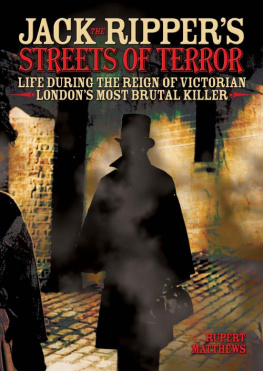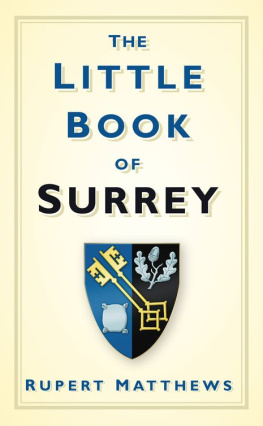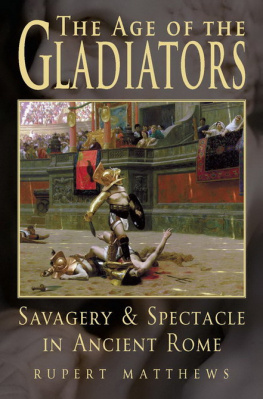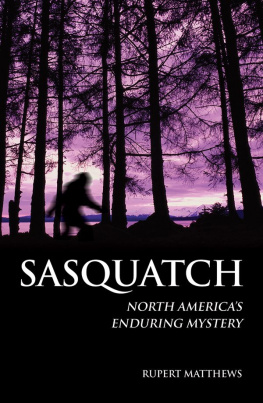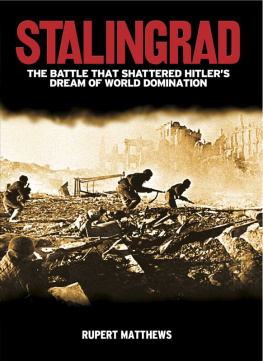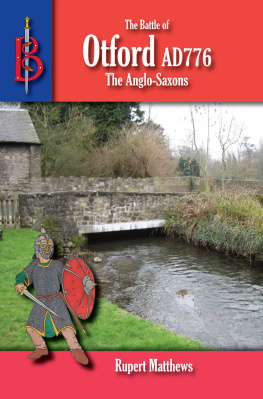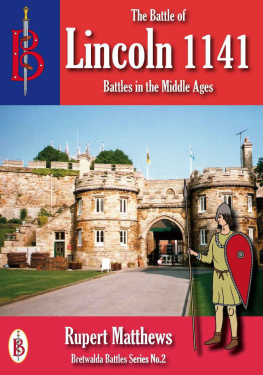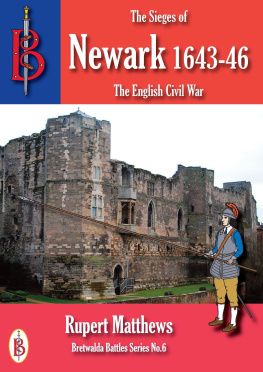Rupert Matthews - Titanic
Here you can read online Rupert Matthews - Titanic full text of the book (entire story) in english for free. Download pdf and epub, get meaning, cover and reviews about this ebook. year: 2012, publisher: Arcturus Digital Limited, genre: Adventure. Description of the work, (preface) as well as reviews are available. Best literature library LitArk.com created for fans of good reading and offers a wide selection of genres:
Romance novel
Science fiction
Adventure
Detective
Science
History
Home and family
Prose
Art
Politics
Computer
Non-fiction
Religion
Business
Children
Humor
Choose a favorite category and find really read worthwhile books. Enjoy immersion in the world of imagination, feel the emotions of the characters or learn something new for yourself, make an fascinating discovery.
- Book:Titanic
- Author:
- Publisher:Arcturus Digital Limited
- Genre:
- Year:2012
- Rating:5 / 5
- Favourites:Add to favourites
- Your mark:
- 100
- 1
- 2
- 3
- 4
- 5
Titanic: summary, description and annotation
We offer to read an annotation, description, summary or preface (depends on what the author of the book "Titanic" wrote himself). If you haven't found the necessary information about the book — write in the comments, we will try to find it.
Titanic — read online for free the complete book (whole text) full work
Below is the text of the book, divided by pages. System saving the place of the last page read, allows you to conveniently read the book "Titanic" online for free, without having to search again every time where you left off. Put a bookmark, and you can go to the page where you finished reading at any time.
Font size:
Interval:
Bookmark:


This edition published in 2011 by Arcturus Publishing Limited
26/27 Bickels Yard, 151153 Bermondsey Street,
London SE1 3HA
Copyright 2011 Arcturus Publishing Limited
All rights reserved. No part of this publication may be reproduced, stored in a retrieval system, or transmitted, in any form or by any means, electronic, mechanical, photocopying, recording or otherwise, without prior written permission in accordance with the provisions of the Copyright Act 1956 (as amended). Any person or persons who do any unauthorised act in relation to this publication may be liable to criminal prosecution and civil claims for damages.
ISBN: 978-1-84858-138-8
AD001100EN
PICTURE CREDITS
Bridgeman Art Library, Corbis, Getty Images, Mary Evans, National Archives, Picture Desk (The Kobal Collection), Topfoto. For more information contact info@arcturuspublishing.com
We have endeavoured to contact the copyright-holders of all images used in this book.
Any oversights in this regard will be rectified in future editions.

CHAPTER 1
THE NORTH ATLANTIC LINERS
CHAPTER 2
LUXURY FIRST
CHAPTER 3
THE MAIDEN VOYAGE
CHAPTER 4
ICE WARNING
CHAPTER 5
WOMEN AND CHILDREN FIRST
CHAPTER 6
THE FIRST SOS
CHAPTER 7
THE BAND PLAYS ON
CHAPTER 8
THE FINAL PLUNGE
CHAPTER 9
THE RESCUE
CHAPTER 10
THE INQUIRIES
CHAPTER 11
BACK TO THE TITANIC
CHAPTER 12
THE SHIP THAT KEEPS ON SINKING
The sinking of the RMS Titanic in the early hours of 15 April 1912 was the worst shipwreck the world had ever known. More than 1,500 people died when the ship went down many from drowning but more from hypothermia on one of the coldest but most beautiful April nights anyone could remember in the North Atlantic. The sheer scale of the disaster shocked the world; the loss of life was simply horrific and utterly unprecedented.
What made the sinking seem so much worse was that it was the RMS Titanic that had gone down. She was the most modern, luxurious and largest passenger ship ever to put to sea. Her proud builders, Harland and Wolff, boasted that they had incorporated every known engineering feature that would make her safer. The trade press had branded her 'virtually unsinkable'. Her owners, the White Star Line, had played on her reputation for safety to run alongside the luxurious fittings of the new ship, her enormous size and her possession of the coveted status as an RMS (Royal Mail Steamer) in their sales publicity.
Yet on her maiden voyage she had gone to the bottom of the ocean with enormous loss of life.
And the lives lost were enough to make headlines by themselves. There was John Jacob Astor, one of the richest men in the world, along with fellow multi-millionaires Benjamin Guggenheim, Isidor Straus and Harry Widener. Other plutocrats, politicians and society figures were lost, each of whom would have rated a newspaper obituary in his or her own right. Also lost were the man who had designed RMS Titanic, Thomas Andrews, and the man who commanded her, Captain Edward Smith. In addition were the hundreds upon hundreds of more humble folk: fathers, sons, mothers, sisters and cousins. Children were left orphans, wives widowed and husbands left desolated. One entire family was wiped out by the sinking.
There was one notable and highly newsworthy survivor in the form of Joseph Bruce Ismay, the chairman of the White Star Line which owned the Titanic.
Such bald statistics do not do justice to what happened that night. Unlike a modern-day train crash or aircraft disaster, the Titanic took hours to sink. The drama unfolded slowly and with an awful, terrifying progression. The waters crept slowly through the vast liner, pushing the huddled masses further and further towards the stern until that too slipped beneath the waves. The survivors brought with them tales of heroism and cowardice, of calmness and panic, of honour and disgrace.

An imaginative artwork of RMS Titanic produced before she was completed. Paintings such as this were used as publicity by the White Star Line as it sought to tempt passengers to use its famously luxurious ships.
The sinking of the RMS Titanic was a sensation around the world at the time, and has remained so ever since. There have been novels set on the doomed liner, blockbuster movies and television shows. The name is known instantly to millions and the main outline of events is familiar too.
Despite this it has proved to be remarkably difficult to pin down exactly what happened and why. Until the wreck was discovered in 1985 it had not been realized that the ship had broken in half as it sank.
In part the reasons for the confusion are natural enough. The three most senior officers on the Titanic were all lost, so investigators were unable to ask them questions about what had happened. Those who did survive were all too busy trying to save themselves and others to pay much attention to what strangers were doing. We know, for instance, that the Titanic's band played a hymn as the ship went down, but survivors could never agree on what it was. Of particular difficulty is time. Harassed crew members and terrified passengers simply had neither the time nor the inclination to check their watches as the disaster unfolded. It is generally agreed that the ship hit the iceberg at 11.40 pm and that it finally sank at 2.20 am, but otherwise all events and incidents can be placed only approximately.
Moreover, while there was great enthusiasm to name and reward the heroes of the hour, nobody wanted to take responsibility for the disaster itself. The men who owned, operated, controlled and regulated the Titanic did their best to blame each other, blame the weather, blame bad luck and blame those who had died. Sorting out what had gone wrong and why was a Herculean task dogged as much by vested interests as by events.
And then there are the mysteries, the legends and the rumours. There had been a ship close to the Titanic when she sank, a ship that did nothing to come to the rescue. The British government put enormous effort into trying to identify this ship, but never succeeded. A great Newfoundland dog had leapt from the ship's deck and for hours had paddled beside a lifeboat. Who owned it? Had it been saved? Two toddlers unable to speak a word of English between them ended up in one lifeboat without their parents. Who were they? What should be done with them? Some lifeboats were launched when they were less than half full. For what reason had this been done?
A thousand questions surrounded the sinking of the Titanic. Some of them were answered, others were not. This book looks at the events of that terrible night afresh. It deals with the way the two official inquiries sought to answer the questions raised by the sinking and seeks to decide if those answers were fair and accurate in the light of new facts uncovered on the wreck and eyewitness accounts not available to the inquiries.
Next pageFont size:
Interval:
Bookmark:
Similar books «Titanic»
Look at similar books to Titanic. We have selected literature similar in name and meaning in the hope of providing readers with more options to find new, interesting, not yet read works.
Discussion, reviews of the book Titanic and just readers' own opinions. Leave your comments, write what you think about the work, its meaning or the main characters. Specify what exactly you liked and what you didn't like, and why you think so.


